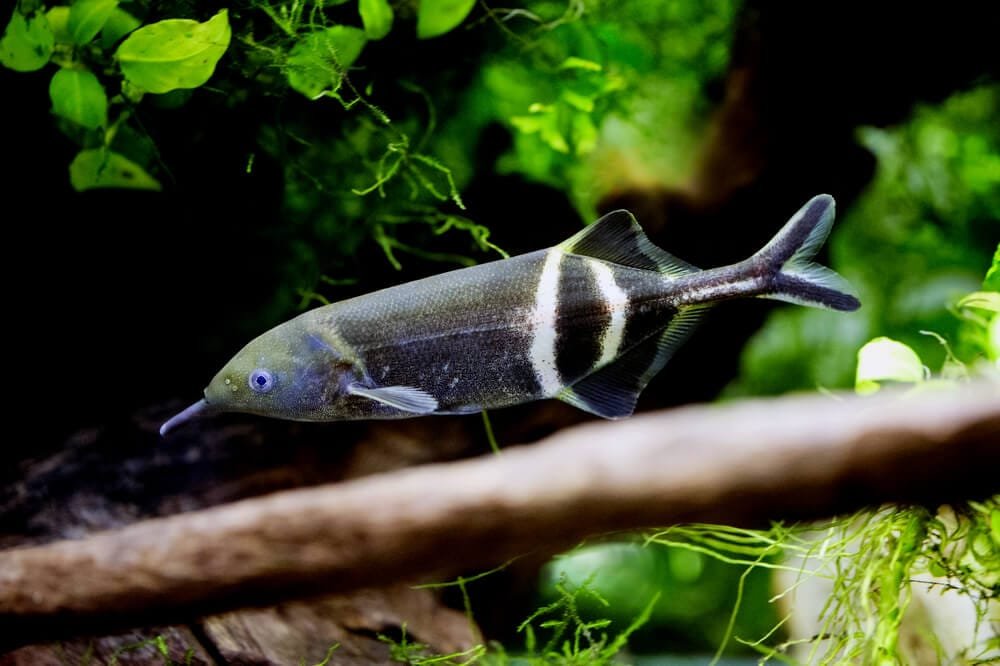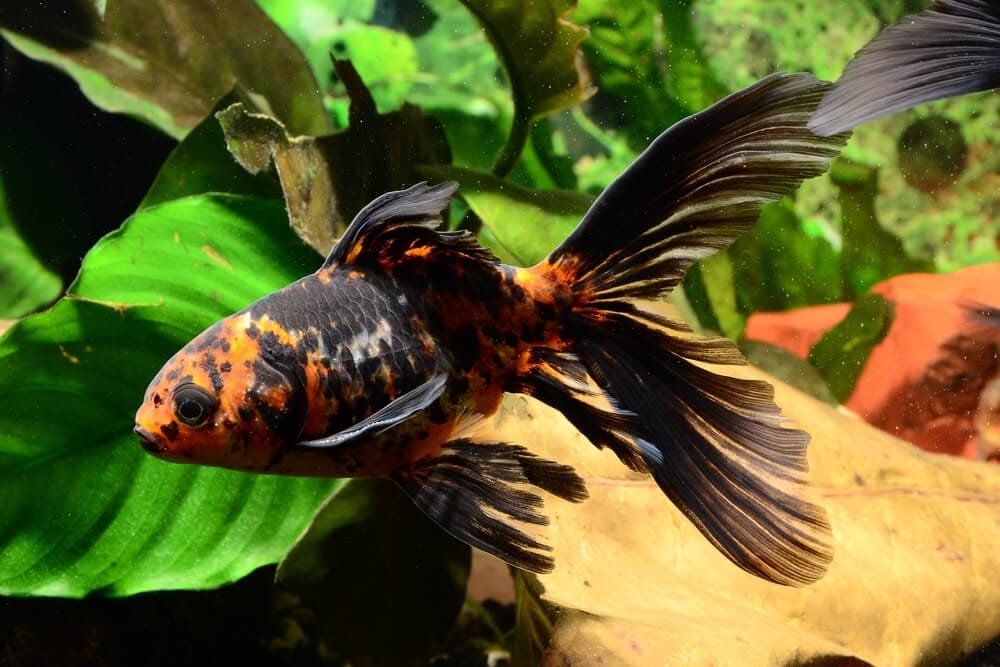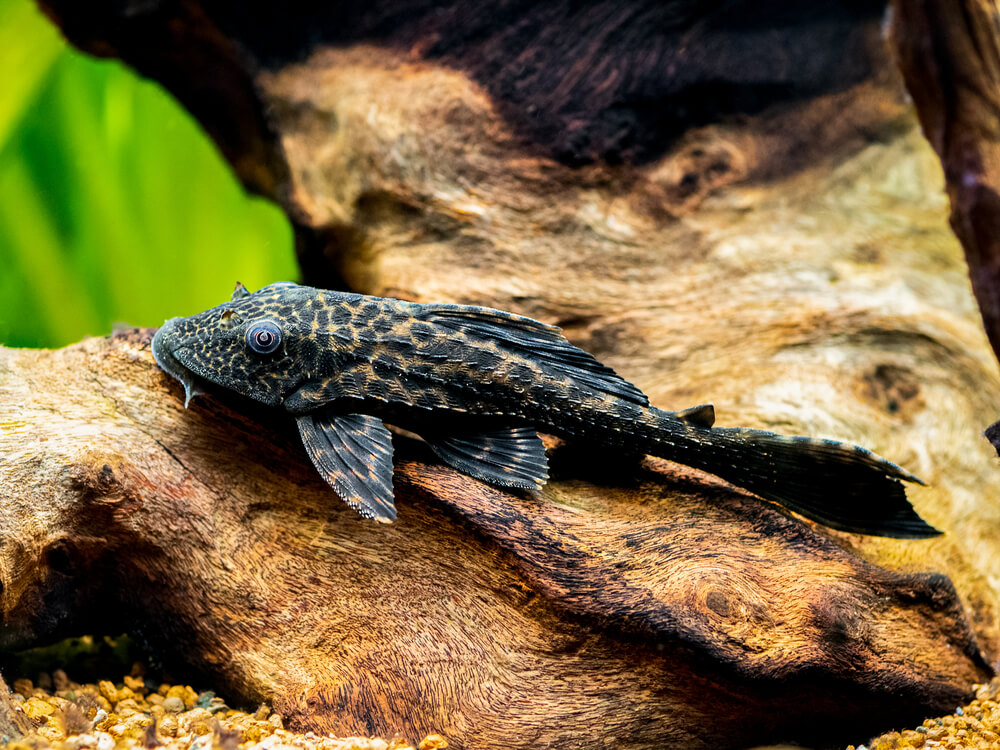Denison Barb: Care Tips and Suitable Tankmates

Imagine having a vibrant and eye-catching fish swimming gracefully in your aquarium, bringing life and color to your living space. The Denison Barb is no ordinary fish; with its shimmering metallic silver body and striking red markings, it is nothing short of a living work of art. Originating from the Western Ghats of India, this exotic species, scientifically known as Sahyadria denisonii, has become increasingly popular among both experienced and beginner fish enthusiasts. In this article, you will explore the mesmerizing traits and care requirements of the Denison Barb, a captivating addition to any aquatic world.
Physical Characteristics
Size and Shape
The Denison Barb, also known as the Red Line Torpedo Barb, is a stunning fish that boasts a sleek and elegant physique. It can grow to an impressive size of up to 6 inches (15 cm), making it a captivating addition to any aquarium. The body of the Denison Barb is elongated and torpedo-shaped, allowing it to gracefully glide through the water. Its streamlined form is accentuated by its vibrant coloration, which we’ll explore in the next section.
Color
One of the most striking features of the Denison Barb is its vibrant coloration. Its body is primarily silver, with a distinct red stripe running horizontally along its sides from the head to the caudal peduncle. This captivating red stripe, which gives the fish its alternate name, adds a pop of color to any aquatic environment. Additionally, Denison Barbs also exhibit a black spot at the base of their caudal fin, adding further visual interest to their appearance.
Fins and Tail
The fins and tail of the Denison Barb perfectly complement its overall appearance. Their dorsal fin features a sleek and elongated shape, blending seamlessly with the body. This dorsal fin is typically adorned with a gradient of colors, transitioning from red or orange at the base to a translucent or clear color towards the tips. The pectoral and pelvic fins of Denison Barbs are transparent, adding a touch of delicacy to their aesthetic. Finally, the tail of this fish is forked, allowing for smooth and agile swimming movements.
History and Origin
Historical Background
The Denison Barb holds a rich historical background that traces its origins back to the Western Ghats region in southwestern India. These beautiful fish were first described by fish taxonomist, Fishpools, in 1865. Initially, they were classified under the scientific name of “Puntius denisonii,” but have since been moved to the genus “Sahyadria.” Over the years, Denison Barbs have captured the hearts of aquarists worldwide and have become popular additions to home aquariums.
Origin and Distribution
The Denison Barb is endemic to the freshwater rivers and streams of the Western Ghats, specifically in the states of Kerala and Tamil Nadu in southern India. In their natural habitat, these fish can be found in fast-flowing waters, navigating through rocky substrates. Unfortunately, due to overfishing and habitat destruction, the wild population of Denison Barbs has significantly declined. As a result, they are now considered a threatened species and are protected by Indian law.
Behavior and Temperament
Social Behavior
Denison Barbs are highly social and active fish, preferring to swim in shoals rather than being solitary. When kept in groups, they exhibit a stunning display of coordinated swimming, enhancing the overall visual appeal of an aquarium. It is recommended to keep Denison Barbs in groups of at least six individuals to ensure their well-being and happiness. Being peaceful in nature, they can coexist with a wide range of tankmates, which we’ll discuss later in this article.
Feeding Habits
In their natural habitat, Denison Barbs are omnivorous, feeding on a variety of small invertebrates, algae, and plant matter. To mimic their natural diet in an aquarium setting, it is important to provide them with a varied diet. High-quality commercially available flakes, pellets, and granules designed for tropical fish can serve as the staple food for Denison Barbs. However, it is crucial to supplement their diet with live or frozen foods such as bloodworms, brine shrimp, and daphnia to ensure optimal health and growth.
Breeding Behavior
Breeding Denison Barbs can be a fascinating process to observe. They are known to exhibit complex courtship rituals, involving intricate movements and color displays to attract potential mates. The female Denison Barb releases her eggs, while the male then fertilizes them externally. After spawning, it is recommended to remove the adult fish from the breeding tank, as they may consume the eggs. The eggs typically hatch within 24 to 36 hours, and the fry can be fed with powdered or liquid fry food until they are large enough to consume regular-sized food particles.
Keeping Denison Barbs
Aquarium Setup
Creating an ideal environment for Denison Barbs requires careful consideration of their natural habitat. These fish thrive in an aquarium that replicates the fast-flowing rivers and streams of the Western Ghats. An aquarium with a minimum volume of 55 gallons (208 liters) is recommended to provide ample swimming space and accommodate a small shoal comfortably. It is important to include plenty of hiding spots, such as caves or driftwood, to alleviate any potential stress among the fish.
Water Conditions
To ensure the well-being of Denison Barbs, it is crucial to maintain stable water conditions within specific parameters. The temperature of the tank water should ideally be kept between 72°F to 78°F (22°C to 26°C). A slightly acidic to neutral pH range of 6.5 to 7.5 is considered optimal for these fish. Furthermore, maintaining moderate water hardness, with a range of 5 to 15 dGH, helps replicate their natural habitat. Regular water testing and appropriate filtration will aid in maintaining good water quality for the Denison Barbs.
Feeding
Denison Barbs are not picky eaters and readily accept a variety of foods. A balanced diet should consist of high-quality flakes or pellets as the primary food source, supplemented with regular feedings of live or frozen foods. It is essential to feed them small portions multiple times a day rather than a large quantity once a day to ensure they receive adequate nutrition. Overfeeding should be avoided, as it can lead to health issues such as obesity and poor water quality. Observing the feeding response and adjusting the quantity accordingly is key to keeping Denison Barbs healthy.
Tankmates
When selecting tankmates for Denison Barbs, it is important to consider their peaceful nature and active swimming behavior. They coexist harmoniously with a wide range of fish species that inhabit the same water parameters. Some suitable tankmates include other non-aggressive community fish like tetras, rasboras, danios, and peaceful bottom-dwelling species like Corydoras catfish. It is advisable to avoid keeping Denison Barbs with fin nippers, aggressive cichlids, or large predatory fish to prevent any potential conflicts.
Health and Disease
Common Health Issues
When cared for properly, Denison Barbs are generally hardy and resilient fish. However, there are a few common health issues that can arise if proper care is not provided. Some potential health problems include bacterial or fungal infections, parasitic infestations, and swim bladder disorders. These issues can often be prevented or mitigated through regular water testing, proper nutrition, and attentive observation of the fish’s behavior and physical appearance.
Preventive Measures
To maintain the health of Denison Barbs, several preventive measures can be implemented. Regular water testing for ammonia, nitrite, nitrate, and pH levels is crucial to ensure optimal water conditions. Performing regular water changes, keeping the aquarium clean, and maintaining appropriate filtration are vital to prevent the buildup of harmful substances. Providing a varied diet and avoiding overfeeding will help strengthen their immune system and reduce the risk of obesity-related health issues.
Treatment Options
If a Denison Barb does fall ill, it is important to take prompt action to prevent the condition from worsening. Quarantining infected fish is recommended to prevent the spread of diseases to others. Depending on the specific ailment, treatment options may vary. Bacterial or fungal infections can be treated with the appropriate medications, while parasitic infestations can be addressed with anti-parasitic treatments. Close monitoring of the affected fish during treatment and following the instructions provided by a knowledgeable aquarist or veterinarian is crucial for successful recovery.
Breeding Denison Barbs
Breeding Setup
Creating the right environment for breeding Denison Barbs requires attention to detail. A separate breeding tank is typically used, equipped with suitable substrate such as fine gravel or marbles for the eggs to fall between. Dense vegetation, such as live plants, can provide shelter for the eggs and fry. It is also important to have a proper filtration system to maintain optimal water quality throughout the breeding process.
Breeding Process
Breeding Denison Barbs can be a rewarding endeavor for experienced aquarists. As previously mentioned, Denison Barbs are egg scatterers, with the female releasing the eggs while the male fertilizes them externally. It is advisable to provide a conducive environment with subdued lighting and ample hiding spots to encourage the spawning process. Once the eggs are laid, the adult fish should be removed to prevent them from consuming the eggs.
Raising Fry
Successfully raising Denison Barb fry requires attention to their specific needs. The newly hatched fry are typically able to swim freely within a few days. At this stage, feeding them powdered or liquid fry food is recommended. As they grow, their diet can be gradually shifted to finely crushed flakes or pellet food. Maintaining stable water conditions and providing a well-balanced diet will contribute to their healthy growth and development.
Role in the Ecosystem
Ecological Importance
Denison Barbs play a significant role in the ecosystem of the Western Ghats region. As omnivorous fish, they contribute to the balance of the aquatic food chain by consuming small invertebrates and algae. Their presence helps control the population of certain organisms and promotes a healthier aquatic environment. Additionally, the vibrant colors of Denison Barbs make them an important attraction for ecotourism, generating economic opportunities for the local communities.
Impact on Native Species
The impact of Denison Barbs on native species in their natural habitat is a topic of concern due to their declining wild population. They have the potential to outcompete native fish species for resources, which can disrupt fragile ecosystems. Human intervention and habitat destruction have contributed to the decline of both Denison Barbs and native species in the Western Ghats. Conservation efforts are essential to mitigate any negative impacts and restore the delicate balance within the ecosystem.
Conservation Status
Threats and Challenges
Denison Barbs face various threats and challenges that have led to their conservation status as a threatened species. Overfishing for the aquarium trade, habitat destruction, and pollution in their native rivers and streams are among the key factors impacting their population decline. Additionally, the introduction of non-native fish species and disturbances to their breeding habitats also pose significant threats to their survival.
Conservation Efforts
Recognizing the need to conserve and protect this unique species, various efforts have been made to safeguard the Denison Barb. The Indian government has implemented legal protection by listing the species under Schedule I of the Wildlife Protection Act. This designation prohibits the collection and trade of Denison Barbs without appropriate permits. Conservation organizations and local communities are working together to raise awareness, restore habitats, and promote sustainable fishing practices to ensure the future survival of this remarkable fish.
Aquarist’s Insights
Personal Experiences
As an aquarist, keeping Denison Barbs can be a rewarding and awe-inspiring experience. Their vibrant colors, energetic behavior, and graceful swimming movements add life and vibrancy to any aquarium. Many aquarists have described the joy of watching their Denison Barbs interact and swim together in synchrony, showcasing their social nature. These fish have the ability to captivate and delight both novice and experienced aquarists alike.
Tips for Success
Successfully keeping Denison Barbs requires careful attention to their specific needs. Ensuring an adequately sized aquarium, maintaining stable water conditions, and providing a balanced diet are key factors in their well-being. Creating a suitable environment that mimics their natural habitat with plenty of swimming space and hiding spots is essential. Regular observation, responsible breeding practices, and participating in conservation efforts contribute to the long-term success and preservation of this remarkable species.
Conclusion
The Denison Barb is a fascinating fish that combines beauty, grace, and social behavior. Its striking coloration, sleek shape, and active swimming make it a captivating addition to any aquarium. Originating from the Western Ghats region in India, this species faces conservation challenges due to habitat loss and overfishing. By understanding their unique characteristics, providing proper care, and participating in conservation efforts, aquarists can contribute to the preservation of this incredible species. So, if you’re looking for a vibrant and captivating addition to your aquatic family, consider welcoming the Denison Barb into your home aquarium.




